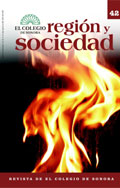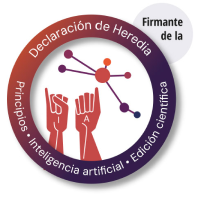Abstract
Security has become a key factor shaping the preferences of visitors to the Mexico-United States border region. In addition to violence in the Mexican border cities, security alerts issued by the federal or state governments in the United States contribute to create a hostile context for border tourism. This constitutes an important challenge for the social construction of the border region as a safe place for visitors. In this paper we analyze the situation and identify institutional, organizational and economic factors that need to be addressed to create a better image of the border. Despite the fact that security alerts contribute to create an adverse scenario, there are opportunities that could be used to maintain a long term competitiveness of the border as a tourist destination. We suggest that local actors and policy makers could use public policy to overcome the challenges imposed by security alerts.
References
Al–Hamarneh, Ala y Christian Steiner. 2004. Islamic Tourism: Rethinking the Strategies of Tourism Development in the Arab World after September 11, 2001. Comparative Studies of South Asia, Africa and the Middle East 24 (1): 173–182.
Baesemann, R. 1977.The Formation of Small Market Places in a Competitive Economic Process–The Dynamics of Agglomeration. Econometrica 45: 361–374.
Baily, Martin Neil. 1993. Competition, Regulation, and Efficiency in Service Industries. Brookings Papers on Economic Activity Microeconomic (2): 71–159.
Baloff, Nicholas. 1966. The Learning Curve–Some Controversial Issues. The Journal of Industrial Economics 14 (3): 275–282.
Bartelsman, Eric J. y Mark Doms. 2000. Understanding Productivity: Lessons from Longitudinal Microdata. Journal of Economic Literature 38 (3): 569–594.
Baum, Joel A. C. y Paul Ingram. 1998. Survival–Enhancing Learning in the Manhattan Hotel Industry 1898–1980. Management Science 44 (7): 996–1016.
Bringas R., Nora L. (coordinadora). 2004. Turismo fronterizo: caracterización y posibilidades de desarrollo. Tijuana: COLEF–CESTUR.
Carlile, Lonny E. 2000. Niche or Mass Market? The Regional Context of Tourism in Palau. The Contemporary Pacific 12 (2): 415–436.
Cohen–Hattab, Kobi. 2004. Zionism, Tourism and the Battle for Palestine: Tourism as a Political–Propaganda Tool. Israel Studies 9 (1):61–85.
Embajada de Estados Unidos. 2006. http://www.usembassy–mexico.gov/spress.html (14 de noviembre de 2006).
Ferri, Marisa y Timothy J. White. 1999. Regionalism, Cooperation, and Economic Prosperity: Effective Autonomy in Emilia–Romagna. Mediterranean Quarterly 10 (3):89–106.
Ingram, Paul y Crist Inman. 1996. Institutions, Intergroup Competition, and the Evolution of Hotel Populations around Niagara Falls. Administrative Science Quarterly 41 (4): 629–658.
Konstadakopulos, Dimitrios. 1998. The Principles of Collective Learning in Agglomeration Economies: A Descriptive Pre–study of the West of England. http://www.uwe.ac.uk/facults/les/research/principl.doc (30 de julio de 2005).
Kruger, Loren. 2001. Theatre, Crime and the Edgy City in Post–apartheid Johannesburg. Theatre Journal 53 (2): 223–252.
Lee, Matthew y John P. Bartkowski. 2004. Love Thy Neighbor? Moral Communities, Civic Engagement, and Juvenile Homicide in Rural Areas. Social Forces 82 (3): 1001–1035.
Mills, Edwin S. 1975. Economía urbana. México: Editorial Diana.
Morris, Brian. 1999. If You Build it, They will Come. Review of John Hannigan's Fantasy City: Pleasure and Profit in the Postmodern Metropolis. Postmodern Culture 9 (3).
Organización Mundial del Turismo (OMT). 1997. Seguridad en turismo: medidas prácticas para los destinos. Madrid: OMT.
Pennings, Johannes M. 1982. The Urban Quality of Life and Entrepreneurship. The Academy of Management Journal 25 (1): 63–79.
Ramos García, José María. 2004. La gestión de la cooperación transfronteriza México–Estados Unidos en un marco de inseguridad global: problemas y desafíos. México: Cámara de Diputados, LIX Legislatura, Consejo Mexicano de Asuntos Internacionales y Miguel Ángel Porrúa.
Reis, Dayr A. 1991. Learning Curves in Food Services. Journal of the Operational Research Society 42 (8): 623–629.
Schrank, Andrew. 2004. Ready–to–Wear Development? Foreign Investment, Technology Transfer, and Learning by Watching in the Apparel Trade. Social Forces 83 (1): 123–156.
Secretaría de Relaciones Exteriores. Sin fecha. Alianza para la Seguridad y la Prosperidad de América del Norte. http://www.sre.gob.mx/eventos/aspan/faqs.htm (16 de enero de 2006).
Secretaría de Turismo. 2007. Compendio estadístico del turismo en México 2006. México: Subsecretaría de Planeación–Dirección General de Información y Análisis.
Stein, Rebecca L. 2002. First Contact and Other Israeli Fictions: Tourism, Globalization, and the Middle East Peace Process. Public Culture 14 (3): 515–543.
Stiglitz, Joseph E. 1992. La economía del sector público. Barcelona: Antoni Bosh Editor S. A.
Storper, Michael y Robert Salais. 1997. Worlds of Production, the Action Frameworks of the Economy. Cambridge: Harvard University Press.
The White House. 2002. Smart Border: 22. Point Agreement–U.S.–Mexico Border Partnership Action Plan, 21 Mars. Washington: Office of Press Secretary.
Wright, Peter. 1987. A Refinement of Porter's Strategies. Strategic Management Journal 8 (1): 93–101.
Open access policy
The authors who publish in región y sociedad accept the following conditions:
In accordance with the copyright laws, región y sociedad recognizes and respects the authors’ moral rights, as well as the ownership of property rights, which will be transferred to the journal to disseminate the articles in open access. región y sociedad does not charge the authors for submitting and processing articles for publication.
All the texts published by región y sociedad —with no exception— are distributed under a Creative Commons license 4.0 Attribution – Noncommercial (CC BY-NC 4.0 International), which allows third parties to use the publication as long as they mention the works’ authorship and the first publication in this journal.
The authors can enter into independent and additional contractual agreements for the nonexclusive distribution of the version of the article published in región y sociedad (for instance include it into an institutional repository or publish it in a book) as long as they clearly indicate that the work was published for the first time in región y sociedad.
For all the above, the author(s) must send the Letter of transfer of property rights of the first publication duly filled in and signed by the author(s). This letter can be sent by e-mail as a PDF to: region@colson.edu.mx




















